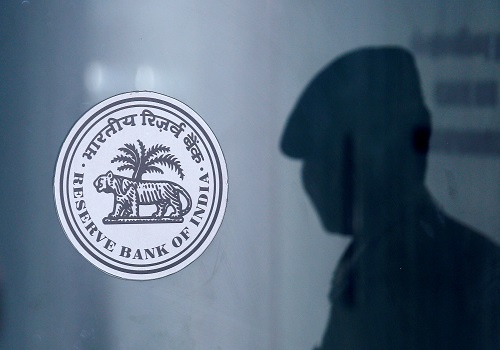Debt Monthly Observer for September 2022 By Pankaj Pathak, Quantum Mutual Fund

Follow us Now on Telegram ! Get daily 10 - 12 important updates on Business, Finance and Investment. Join our Telegram Channel
Indian Bonds Going Global
Recently, there have been increasing conversations about the potential inclusion of Indian government bonds into the global bond indices.Indian bond market has defied the global trend of rising bond yields over the last two months on an expectation that India will be included in the JP Morgan GBI-EM Global Diversified Index and foreigners will rush to buy Indian bonds.
India has one of the largest local currency government bond markets among emergingmarket economies with over Rs. 86 trillion (USD 1.2trillion) of outstanding debt stock. But long-held restrictions on foreign buying of its bonds have kept it out of the top benchmarks used by global money managers.
In April 2020, the RBI removed all the foreign investment caps for a list of government securities under the fully accessible route (FAR). This opened up the possibility of India’s inclusion in the global bond indices.
Currently, there are 22 bonds in the FAR list with maturities ranging between 1 to 30 years. The total outstanding amount of FAR bonds is Rs. 22.8 trillion (USD 287 billion).
Despite the removal of investment restrictions on Indian debt, global investors held back India’s index inclusion citing problems with capital controls, custody and settlement, taxations, and other operational snags.
In October 2021, JP Morgan put India on the watchlist. It noted - “India (INR) government bonds are ontrack to be placed on Index Watch (observation period) for eligibility to the GBI-EM Global Diversified Index”.As per the agency“India is the largest ‘off-index’ market with thepotential to reach a 10% allocation in the GBI-EM GD”.
The report also highlighted two key hurdles in the index inclusion
(1) ability to access the market through an international central security depository (e.g. Euroclear)
(2) clarity on taxes.
There has been no progress on these two remaining issues till now
So, what changed: JP Morgan removed Russian debt from all its bond indices in March 2022 in response to Russia’s attack on Ukraine. Russia had a weight of about 8% in the JP Morgan GBI EM Index. Its removal led to an excessive concentration among a few countries within the index. Now, 7 countries in the
GBI-EM Index have the maximum allowed weight of 10%, while the remaining 13 countries have a combined weight of only 30%.
This has fuelled an expectation that global investors may overlook some of the remaining concerns and prefer to include India this time.
India’s index inclusion would add diversification to the index, enhance the yield and expand the market opportunities for global debt investors.So, the benefits might outweigh the concerns.
What does it mean for India?
Unlike equities, Indian bond markets have failed to attract any sizeable pool of foreign capital till now. Foreigners hold less than 2% of Indian bonds; while the government is excessively relying on commercial banks and the RBI to fund its large borrowing program.
Chart -I: Indian Bonds are under-owned by foreigners

Index inclusion will open up a source of durable demand for Indian bonds from investors who track the index, particularly from the exchange-traded funds or ETFs. Even active investors will be more comfortable investing in India when it becomes part of the index.
Apart from the direct impact of additional demand, there are other benefits as well
* The new demand source for government bonds might also help in deepening the corporate bond market in India.
* Potential foreign inflows into Indiandebt will expand the source of foreign capital which in turn will strengthen India’s balance of payment situation and deepen the market for the Indian Rupee.
* Foreign holding of bonds would enforce much stricter discipline on the fiscal and monetary policy.
* Increased participation by foreign investors, would enhance the credibility of the Indian bond market and will make it easier for the government and the corporate sector to raise debt capital from global investors.
Clearly, India has a lot to gain from Index inclusion. However, there are downsides as well. High foreign holding of debt might expose Indian markets to external shocks. Large inflows-outflows linked to developments in the global markets can have an outsized impact on the domestic bond and currency markets.
Thus, additional safeguard measures will have to be deployed to deal with any such external shocks.
What does the bond market expect:
As per estimates by some global investment banks, India’s inclusion in the GBI-EM Index could attract around USD 25-40 billion foreign inflows in the first year.Inclusion into Bloomberg’s Global Aggregate Index could attract another USD 7-10 billion. Currently, foreign investors holding Indian government bonds are around USD 18 billion and corporate bonds are around USD 13.8 billion.A sharp jump in foreign demand will be a big boost for the Indian debt market. It should drive bond yields lower and prices higher.
Chart – II: FPI hasshied away from Indian Debt Since 2018

However, we expect it to be a story for the next year. Even if JP Morgan announces India’s inclusion into its emerging market bond index, it would take around 6-12 months for actual inclusion to start. The lead time allows investors to setup accounts and make other operational arrangements.
We expect actual inclusion to start sometime between April – September 2023, assuming the announcement comes during this month or the next. Based on the ongoing practise, the inclusion should happen with a starting index weight of 1% which would go up to the final 10% weight in 10 months period with a one percentage point increase in weight every month.
So, passive inflows should come during the second half of 2023.There is a possibility that active global investors will load up the Indian bonds before the actual inclusion. However, we do not expect any significant inflows at this stage given the uncertainty over the future course of monetary policy in the advanced economies. Almost all the major central banks are hiking interest rates and reducing liquidity to fightinflation. Bond yields across all the major economies have been moving higher sharply.
This might not be a conducive environment for investors to take a tactical bet on an emerging market local bond. Thus, in the near term, the impact of index inclusion would be purely sentimental. There is a possibility of a very short-term 10-20 basis points dip in bond yields following the index inclusion announcement. However, we do not see a sustained fall in yields in the current year. We would prefer to wait for the global central banks to slowdown the pace of rate hikes before taking any bet on India’s index inclusion.
Outlook
Indian bond yields have been falling (bond prices rising) since mid-June 2022. The 10- year government bond yield peaked at 7.6% in June 2022. It fell to 7.45% by June end, 7.32% by July end, and 7.24% by August end and dipped to the lows of 7.07% during the second week of September 2022.
It gave up some of the gains over the last few days and is currently trading around 7.24% as on September 20, 2022. The decline in bond yields started with a clamour of global growth slowdown and falling commodity prices. The rally was extended on the expectation of index inclusion chatters.
The domestic monetary policy in India is near its fag end. The market is already pricing for the Repo rate to peak around 6% by this year-end and remain there for some time. However, the RBI might maintain its hawkish tone beyond 2022 if the external monetary environment remains hostile.
We maintain our view that the worst of the bond market sell-off is now behind us though there we may not see a reversal happening anytime soon. Medium to long-term bond yields should trade in a narrow range for the next 3-6 months.
To Read Complete Report & Disclaimer Click Here
Above views are of the author and not of the website kindly read disclaimer










Tag News

Monthly Debt Market Update, September 2023: CareEdge Ratings



More News

Quote on RBI Monetary Policy By Mr Sujan Hajra, Anand Rathi Shares & Stock Brokers









